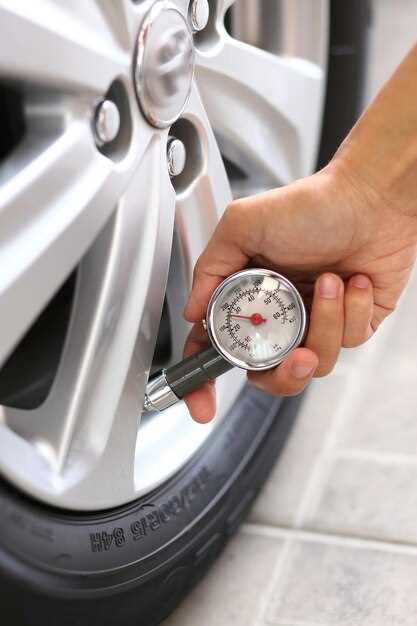
For Ford owners, maintaining optimal vehicle performance goes beyond just regular oil changes and timely inspections. Proper tire rotation and balancing are essential aspects of vehicle service that significantly affect handling, safety, and tire longevity. By ensuring that your tires wear evenly, you not only extend their lifespan but also enhance the overall driving experience of your Ford.
When it comes to tire care for your Ford, understanding the specific needs of your vehicle is crucial. Each model may have different specifications regarding tire size and pressure, but the basic principles of rotation and balancing remain constant. Regularly scheduling these services helps prevent uneven tire wear, which can lead to handling issues and increased fuel consumption.
In this article, we will delve into practical tire rotation and balancing tips tailored specifically for Ford vehicles. Proper care of your tires can make a significant difference in your car’s performance and safety. Whether you are a seasoned car enthusiast or a new Ford owner, following these tips will help you make informed decisions about your vehicle’s maintenance.
When and How to Rotate Your Ford Tires

Regular tire rotation is essential for maintaining even wear and optimizing the lifespan of your tires. For Ford owners, it’s recommended to rotate your tires every 5,000 to 7,500 miles, or as specified in your vehicle’s owner manual. This frequency can vary depending on driving habits and road conditions, so it’s essential to monitor your tires closely.
To perform a tire rotation, begin by gathering the necessary tools: a jack, jack stands, and a lug wrench. Ensure your Ford is parked on a flat surface, engage the parking brake, and loosen the lug nuts on all four tires slightly, but do not remove them yet. Use the jack to lift the vehicle and then secure it with jack stands.
Next, follow the recommended rotation pattern for your particular Ford model. Generally, for vehicles with non-directional tires, the front tires should be swapped with the rear tires, while maintaining the same side of the vehicle. For vehicles with directional tires, simply switch the front tires with each other and the rear tires accordingly.
After repositioning the tires, tighten the lug nuts in a star pattern to ensure even pressure. Lower your Ford back to the ground and perform a final torque check on the lug nuts once the vehicle is securely on the ground. Regular tire care, including rotation, extends the life of your tires, promotes better handling, and enhances your Ford’s overall performance.
Signs Your Ford Tires Need Balancing
Maintaining the balance of your Ford’s tires is crucial for optimal performance. Unevenly balanced tires can lead to various issues affecting your driving experience. Here are some clear signs that indicate your Ford tires may need balancing:
1. Vibration While Driving: If you notice unusual vibrations coming from the steering wheel or the entire vehicle, it’s a strong indicator that your tires may be out of balance. This can occur at specific speeds and can worsen as you accelerate.
2. Uneven Tire Wear: Inspect your tire tread regularly. If you find that some areas are worn down more than others, this uneven wear could be a result of improper balancing. This not only affects the longevity of your tires but also impacts the comfort of your ride.
3. Steering Wheel Drift: When your tires are unbalanced, you may experience a tendency for your Ford to drift to one side of the road. If you find yourself constantly adjusting the steering wheel to stay straight, it’s time to consult a service professional.
4. Noisy Ride: Excess noise coming from your tires, particularly at higher speeds, can indicate that your tires are not balanced correctly. This noise can be distracting and diminish your overall driving experience.
5. Frequent Road Service: If you frequently find yourself visiting service centers for tire issues, it may point to a recurring problem with tire balancing. Regular checks can help identify this before it leads to more significant issues.
Addressing tire balancing promptly not only enhances your Ford’s performance but also contributes to your safety on the road. If you experience any of these signs, consider scheduling a service to ensure your tires are properly balanced.
Best Practices for Maintaining Tire Health on Ford Vehicles

Proper care of your tires is essential for ensuring the safety and performance of your Ford vehicle. By following these best practices, you can extend tire life and maintain optimal driving conditions.
Regular Inspections: Make it a habit to inspect your tires at least once a month. Look for signs of wear, such as uneven tread or sidewall damage. Ensure that the tire pressure is at the recommended level specified in your owner’s manual.
Tire Rotation: Rotate your tires every 5,000 to 7,500 miles, or as recommended by Ford. This helps to ensure even wear across all tires, extending their lifespan and improving handling.
Balancing and Alignment: Ensure that your tires are properly balanced and aligned to prevent uneven wear. Misalignment can lead to premature tire deterioration and negatively impact your Ford’s steering response.
Maintain Proper Inflation: Keeping your tires properly inflated is crucial for optimal performance. Under-inflated tires can cause increased rolling resistance, reduced fuel efficiency, and overheating. Check your tire pressure regularly, especially before long trips.
Use Quality Tires: When replacing tires, choose high-quality options that are suitable for your Ford model. Consult your owner’s manual for specifications and consider factors such as tread design and rubber composition for your driving conditions.
Monitor Seasonal Changes: Seasonal weather shifts can affect tire performance. In colder months, inspect tires for winter readiness and consider switching to winter tires if you live in areas with significant snowfall.
Keep Tires Clean: Regular cleaning of your tires can help prevent build-up of grime and debris, which can affect performance. Use a gentle cleanser and avoid harsh chemicals that may damage the rubber.
By following these practices, Ford owners can ensure the longevity and health of their tires, ultimately enhancing the driving experience.



